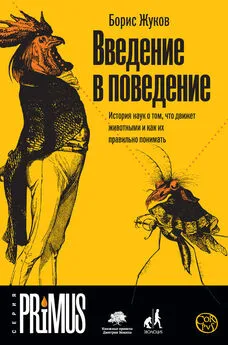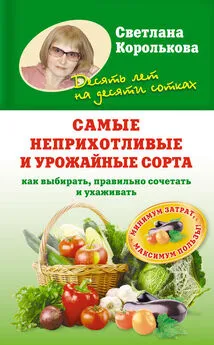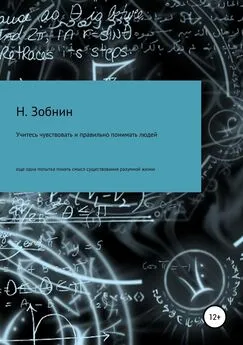Герд Гигеренцер - Понимать риски. Как выбирать правильный курс
- Название:Понимать риски. Как выбирать правильный курс
- Автор:
- Жанр:
- Издательство:Array Литагент «Аттикус»
- Год:2015
- Город:Москва
- ISBN:978-5-389-09327-0
- Рейтинг:
- Избранное:Добавить в избранное
-
Отзывы:
-
Ваша оценка:
Герд Гигеренцер - Понимать риски. Как выбирать правильный курс краткое содержание
В этой книге рассказывается, как распознавать случаи, когда предоставляемая нам информация оказывается неполной, и как следует поступать в таких ситуациях. Ее автор Герд Гигеренцер всесторонне рассматривает приводимые примеры, выявляя причины неправильного понимания тех рисков, с которыми мы сталкиваемся. Он показывает, как можно использовать простые правила, которые помогут нам избегать беспричинных страхов или надежд и принимать более грамотные и взвешенные решения.
Понимать риски. Как выбирать правильный курс - читать онлайн бесплатно полную версию (весь текст целиком)
Интервал:
Закладка:
Gigerenzer G., Hertwig R., van den Broek E., Fasolo B., Katsikopoulos K. V. (2005). «A 30 % chance of rain tomorrow»: How does the public understand probabilistic weather forecasts? Risk Analysis 25, 623–629.
Gigerenzer G., Hertwig R., and Pachur T. (Eds.) (2011). Heuristics: The foundations of adaptive behavior. New York: Oxford University Press.
Gigerenzer G., Mata, J., Frank R. (2009). Public knowledge of benefits of breast and prostate cancer screening in Europe. Journal of the National Cancer Institute 101(17), 1216–1220. doi:10.1093/jnci/djp237.
Gigerenzer G., Muir Gray J. A. (Eds.) (2011). Better doctors, better patients, better decisions: Envisioning health care 2020. Cambridge, MA: MIT Press.
Gigerenzer G., Selten R. (2001). Bounded rationality: The adaptive toolbox. Cambridge, MA: MIT Press.
Gigerenzer G., Swijtink Z., Porter T., Daston L., Beatty J., Krüger L. (1989). The empire of chance: How probability changed science and everyday life. Cambridge, UK: Cambridge University Press.
Gigerenzer G., Todd P. M. , the ABC Research Group (1999). Simple heuristics that make us smart. New York: Oxford University Press.
Gigerenzer G., Wegwarth O., Feufel M. (2010). Misleading communication of risk: Editors should enforce transparent reporting in abstracts. British Medical Journal 341, 791–792. doi:10.1136/ bmj.c4830.
Goldstein D. G., Gigerenzer G. (2002). Models of ecological rationality: The recognition heuristic. Psychological Review 109, 75–90. doi:10.1037/ 0033–295X.109.1.75.
Goldstein D. G., and Taleb N. N. (2007). We don’t quite know what we are talking about when we talk about volatility. Journal of Portfolio Management 33, 84–86.
Good Stewardship Working Groups (2011). The «top 5» lists in primary care. Archives of Internal Medicine 171, 385–390.
Gøtzsche P. C., Nielsen M. (2011). Screening for breast cancer with mammography. Cochrane Database of Systematic Reviews 1, Article CD001877. doi:10.1002/14651858.CD001877. pub4.
Gould S. J. (1992). Bully for brontosaurus: Further reflections in natural history. New York: Penguin Books.
Graham I. D., Stiell I. G., Laupacis A., et al. (2001). Awareness and use of the Ottawa ankle and knee rules in 5 countries: Can publication alone be enough to change practice? Annals of Emergency Medicine 37, 259–266.
Gurian E. A., Kinnamon D. D., Henry J. J., Waisbren S. E. (2006). Expanded new-born screening for biomedical disorders: The effect of a false-positive result. Pediatrics 117, 1915–1921.
Haag L., Stern E. (2003). In search of the benefits of learning Latin. Journal of Educational Psychology 95, 174–178.
Hair M., Renaud K. V., Ramsay J. (2007). The influence of self-esteem and locus of control on perceived email-related stress. Computers in Human Behavior, 23, 2791–2803.
Haldane A. G. (2012). The dog and the Frisbee. Speech, Jackson Hole, August 31, 2012. www.bankofengland.co.uk/publications/Pages/speeches/2012/596.aspx.
Hale W. R. (1996). Can the Ottawa ankle decision rules be applied in the United States? Western Journal of Medicine 164, 363.
Harris R., and Lohr K. N. (2002). Screening for prostate cancer: An update of the evidence for the U. S. Preventive Services Task Force. Annals of Internal Medicine 137, 917–929.
Hecht S. S., Kassie, F., Hatsukami D. K. (July 2009). Chemoprevention of lung carcinogenesis in addicted smokers and ex-smokers. Nature Reviews Cancer 9, 476–488.
Hertwig R., Davis J. N., Sulloway F. (2002). Parental investment: How an equity motive can produce inequality. Psychological Bulletin 128, 728–745.
Hertwig R., Hoffrage U., the ABC Research Group. (2013). Simple heuristics for a social world. New York: Oxford University Press.
Hewlett J., Waisbren S. E. (2006). A review of the psychosocial effects of false-positive results on parents and current communication practices in newborn screening. Journal of Inherited Metabolic Disease 29, 677–682.
Hoffman R. M., Lewis C. L., Pignone M. P., Couper M. P., Barry M. J., Elmore J. G. et al. (2010). Decision making processes for breast, colorectal, and prostate cancer screening: The DECISIONS survey. Medical Decision Making 30, 53S – 64S.
Hoffrage U., Gigerenzer G. (1998). Using natural frequencies to improve diagnostic inferences. Academic Medicine 73, 538–540. doi:10. 097/00001888–99805000–00024.
Hoffrage U., Lindsey S., Hertwig R., and Gigerenzer G. (2000). Communicating statistical information. Science 290, 2261–2262. doi:10.1126/ science.290.5500.2261.
Holmes M. D., Chen W. Y., Feskanich D., Kroenke C. H., and Colditz G. A. (2005). Physical activity and survival after breast cancer diagnosis. Journal of the American Medical Association 293, 2479–2486.
Huff D. (1959). How to lie with statistics. New York: Norton.
col1_0 (2005). Why most published research findings are false. PLoS Medicine 2, 696–701.
Jefferson T., Jones M. A., Doshi P., Del Mar C. B., Heneghan C. J., Hama R., Thompson M. J. (2012). Neuraminidase inhibitors for preventing and treating influenza in healthy adults and children. Cochrane Database of Systematic Reviews 1. Art. No.: CD008965. doi:10.1002/14651858.
Kahneman D. (2011). Thinking, fast and slow. London: Allen Lane.
Kahneman D., Tversky A. (1972). Subjective probability: A judgment of representativeness. Cognitive Psychology 3, 430–454.
Kammerl R., Hirschäuser L., Rosenkranz M., Schwinge C., Hein S., Wartherg L. (2012). EXIF – Excessive Internetnutzung in Familien [Excessive Internet use in families]. Berlin: Bundesministerium für Familie, Senioren, Frauen und Jugend.
Kant E. (1784). Beantwortung der Frage: Was ist Aufklärung? Berlinische Monatsschrift, Dezember-Heft 481–494.
Kattah J. C., Talkad A. V., Wang D. Z., Hsieh Y. – H., Newman-Toker D. E. (2009). HINTS to diagnose stroke in the acute vestibular syndrome. Stroke 40, 3504–3510.
Knaul F., Frenk J. (2010). Latin America’s silent breast cancer epidemic. Harvard School of Public Health, Office of the Dean. Retrieved from http://134.174.190.199/administrative-offices/deans-office/julio-frenk-dean/silent-breast-cancer-epidemic/index.html.
Knight F. (1921). Risk, uncertainty and profit. Boston, MA: Houghton Mifflin Co.
Kohn L. T., Corrigan J. M., Donaldson M. S. (Eds.) (2000). To err is human: Building a safer health system. Washington, DC: National Academy Press.
Krämer W. (2011). Die Angst der Woche: Warum wir uns vor den falschen Dingen fürchten. Munich: Piper.
Krauss S., Wang X. T. (2003). The psychology of the Monty Hall problem: Discovering psychological mechanisms for solving a tenacious brain teaser. Journal of Experimental Psychology: General 132, 3–22.
Kruglanski A., Gigerenzer G. (2011). Intuitive and deliberate judgments are based on common principles. Psychological Review 118, 97–109.
Kritzman M., Page S., Turkington D. (2010). In defense of optimization: The myth of 1/N. Financial Analysis Journal 66, 31–39.
Krogsbøll L. T., Jørgensen K. J., Grønhøj Larsen C., and Gøtzsche P. C. (2012). General health checks in adults for reducing morbidity and mortality from disease. Cochrane Database of Systematic Reviews 10, CD009009. doi:10.1002/14651858. CD009009.pub2.
Krüger L., Daston L., Heidelberger M. (Eds.) (1987). The probabilistic revolution, Vol. 1: Ideas in history. Cambridge, MA: MIT Press.
Krüger L., Gigerenzer G., Morgan M. S. (Eds.) (1987). The probabilistic revolution: Vol. II: Ideas in the sciences. Cambridge, MA: MIT Press.
Kurz-Milcke E., Gigerenzer G., Martignon L. (2008). Transparency in risk communication: Graphical and analog tools. Annals of the New York Academy of Sciences 1128, 18–28.
Kurz-Milcke E., Gigerenzer G., Martignon L. (2011). Risiken durchschauen: Graphische und analoge Werkzeuge. Stochastik in der Schule 31, 8–16.
Labarge A. S., McCaffrey R. J., Brown T. A. (2003). Neuropsychologists’ ability to determine the predictive value of diagnostic tests. Clinical Neuropsychology 18, 165–175.
Larson C. A. (2011). Evidence-based medicine: An analysis of prophylactic bilateral oophorectomy at time of hysterectomy for benign conditions. Current Oncology 18, 13–15.
LeDoux J. E. (1996). The emotional brain. New York: Simon and Schuster.
Lee C. I., Haims A. H., Monico E. P., Brink J. A., Forman H. P. (2004). Diagnostic CT scans: Assessment of patient, physician, and radiologist awareness of radiation dose and possible risk. Radiology 231, 393–398.
Leeman R. F., Fischler C., Rozin P. (2011). Medical doctors’ attributes and beliefs about diet and health are more like those of their lay countrymen (France, Germany, Italy, UK, and U.S.A) than those of doctors in other countries. Appetite 56, 558–563.
Leibniz G. W. (1951). The horizon of human doctrine. In P. P. Wiener (Ed.). Selections (p. 73–77). New York: Scribner’s Sons. (Original work published 1690.)
Lewis M. (2010). The big short. New York: Norton.
Lin E. C. (2010). Radiation risk from medical imaging. Mayo Clinic Proceedings 85, 142–146.
Liu Y., Hu F., Li D. (2011). Does physical activity reduce the risk of prostate cancer? European Urology 60, 1029–1044.
Longnecker M. P., Newcomb P. A., Mittendorf R., Greenberg E. R., Clapp R. W., Bogdan G. F., et al. (1995). Risk of breast cancer in relation to lifetime alcohol consumption. Journal of the National Cancer Institute 87, 923–929.
Luchins E. H., Luchins A. S. (1979). Introduction to the Einstein– ertheimer correspondence. Methodology and Science 12, 165–202.
MacDonald K. L., Jackson J. B., Bowman R. J., Polesky H. F., Rhame F. S., Balfour H. H., et al. (1989). Performance characteristics of serologic tests for human immunodeficiency virus type 1 (HIV‑1) antibody among Minnesota blood donors. Public health and clinical implications. Annals of Internal Medicine 110, 617–621.
Maidique M. (2012). The leader’s toolbox: A deconstruction of high-stakes CEO decision making. Poster presentation at the meeting of the Society of Judgment and Decision making, Seattle. Retrieved from onlineappsdev.fiu.edu/lead/news/article/38.
Makridakis S., Hogarth R. M., Gaba A. (2009). Forecasting and uncertainty in theeconomic and business world. International Journal of Forecasting 25, 794–812.
Malkiel B. G. (2007). A random walk down Wall Street. New York: Norton.
Mandelbrot B., Taleb N. N. (2005, July 11). How finance gurus get risk all wrong. Fortune 99–100.
Martignon L., Vitouch O., Takezawa M., Forster M. R. (2011). Naive and yet enlightened: From natural frequencies to fast and frugal trees. In G. Gigerenzer, R. Hertwig, and T. Pachur (Eds.), Heuristics: The foundations of adaptive behavior (p. 134–150). New York: Oxford University Press.
McCollough C. H. (2011). Defending the use of medical imaging. Health Physics 100, 318–321.
McManus I. C., Richards P., Winder B. C., Sproston K. A. (1998). Clinical experience, performance in final examinations, and learning style in medical students: Prospective study. British Medical Journal 316, 345–350.
Mill J. S. (1869). On liberty. London: Longman, Roberts and Green.
Читать дальшеИнтервал:
Закладка:










